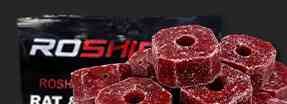The first step to control rats to inspect the area and identify the location of their habitat. Remove any food or water sources and harbourage materials.
Discover how the rats entered your property so that you can prevent them returning. Looking into how rats gain access to buildings is key to understanding both the infestation and future-proofing. Rats can access small holes, often less than 20mm, and so filling inaccessible gaps externally and internally will help prevent long-term infestations. We generally recommend that you do not undertake proofing works until the end of the treatment.
Traps or Rodenticides
Firstly, decide whether to use traps or rodenticide to eradicate your rat infestation. Both methods are effective so that it may come down to preference.
Trap Option
Trapping is generally not as easy as you would expect. Infestations can be controlled but can take time. One of the advantages of trapping is that there are no poison baits involved, so this option is safer around non-target species, pets and children. Trapping also ensures that you can dispose of the carcasses before the odour becomes a problem in an inaccessible area.
Boxes are also a key part of rat treatments if baiting in open areas such as kitchens or where children or pets have a risk of coming into contact with the traps. Boxes can prevent rats from entering initially, and it is normal for acceptance for periods longer than 1 week. If you cannot control the trap environment around the trap, we certainly suggest using a trap box.
Poison Option
When no alternatives are available, our recommendation is to use rodenticide poison bait for fast and professional control. These options come with significant risks that must be understood to prevent unintentional harm to non-target animals, children, and users.
Rodenticide is a highly effective method of control. However, correct placement should be understood to gain acceptance. A typical baiting area would be near burrows, feeding areas or within voids frequently used by rats.
Existing food sources must be fully understood and removed; otherwise, you may find that you are competing against alternative food sources and not gaining the full results as expected.
Under new UK regulations, all rodenticide bait, applied by non-certified users, must be used with a tamper-resistant bait station, regardless of the situation or location.
An essential part of rodenticide baiting is the removal and correct disposal of any carcasses. Twice daily inspections of the area should be undertaken to search the treatment area and any bodies found should be double-bagged and disposed of in your general waste. If you are a company, you may have to treat waste as hazardous.
We produce a range of products based on the active ingredients difenacoum, bromadiolone and brodifacoum. These are the most widely used anticoagulants in rodenticides for both professional and amateur use.





